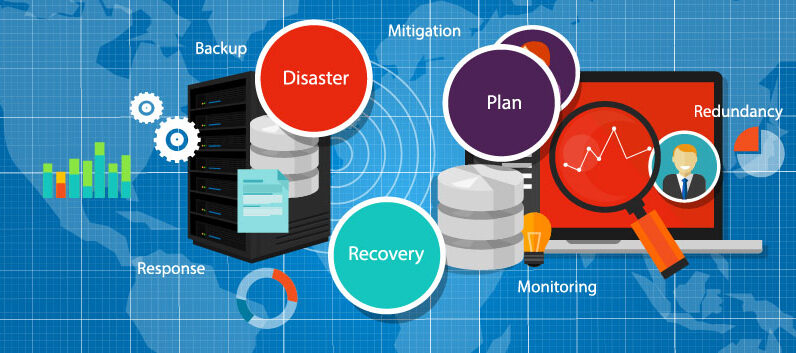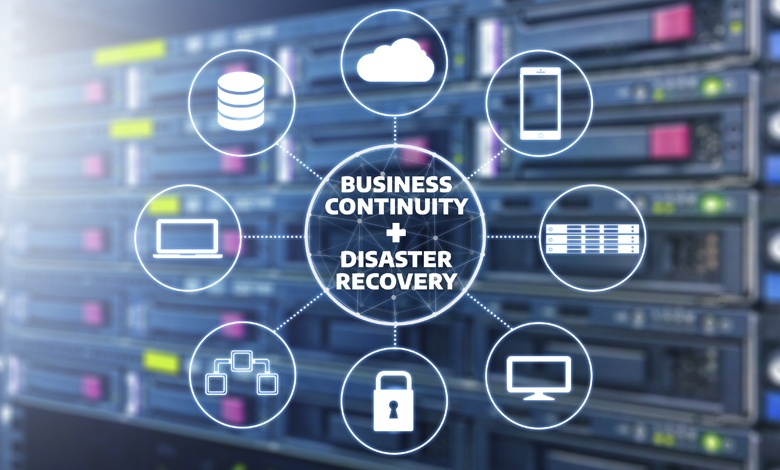
A disaster recovery plan focuses on the restoration of IT infrastructure after a catastrophic event, while a business continuity plan aims to ensure that critical business functions can continue during and after a disaster. Disasters can strike at any time, from natural disasters like hurricanes and floods to cyber-attacks and system failures.
The impact of such events can disrupt business operations, resulting in financial losses and damage to reputation. To mitigate these risks, organizations need comprehensive plans in place to address both immediate recovery and the long-term continuity of their operations. This is where disaster recovery (DR) and business continuity (BC) plans come into play.
While often used interchangeably, it is essential to understand the differences between these two crucial strategies. We will explore the distinctions between disaster recovery and business continuity plans, and how each contributes to an organization’s resilience in the face of unexpected disruptions.

Credit: community.connection.com
Disaster Recovery Plan
A Disaster Recovery Plan (DRP) is a documented and structured approach to ensure the swift recovery of critical IT systems and data after a disaster or disruption occurs. It is an essential component of business continuity planning, aimed at minimizing downtime, data loss, and financial impacts caused by unexpected events.
Definition And Importance Of Disaster Recovery Plan
A Disaster Recovery Plan outlines the procedures and strategies necessary to restore normal operations after a disruption. It includes identifying critical IT systems and data, establishing backup and recovery strategies, conducting testing to ensure effectiveness, and maintenance to keep the plan up to date.
Components Of An Effective Disaster Recovery Plan
- Identification of Critical IT Systems and Data: Prioritize critical systems and data that are vital for business operations.
- Backup and Recovery Strategies: Implement appropriate backup solutions and establish recovery procedures to restore the systems and data.
- Testing and Maintenance: Regularly test the plan’s effectiveness and update it as necessary to adapt to technological advancements.
Best Practices For Developing A Disaster Recovery Plan
- Document the Plan: Clearly document the plan, including contact information, procedures, and responsibilities.
- Consider Business Impact: Assess the potential financial and operational impacts of a disruption and prioritize recovery efforts accordingly.
- Training and Awareness: Train staff on their roles and responsibilities during recovery processes and promote awareness of the plan.
Business Continuity Plan
Business Continuity Plan
A Business Continuity Plan is a comprehensive strategy aimed at ensuring the continuity of critical operations in the event of a disaster or disruption. It outlines the steps and procedures to be followed to minimize the impact and hasten the recovery process.
Definition and Importance of Business Continuity Plan
A Business Continuity Plan is a proactive approach to ensure the organization’s critical functions and services continue to operate during and after a disruption. It helps protect the reputation, revenue, and customer relationships of a business by minimizing downtime and loss of productivity. By having a robust continuity plan, organizations can quickly recover and restore operations, ensuring they can meet their commitments to customers and stakeholders.
Components of an Effective Business Continuity Plan
- Risk Assessment and Business Impact Analysis: Identifying potential risks and assessing their potential impact on critical business functions.
- Continuity Strategies and Solutions: Developing strategies and solutions to mitigate disruptions and maintain essential operations.
- Employee Training and Awareness: Educating employees about their roles and responsibilities during a crisis and promoting awareness of the continuity plan.
- Best Practices for Developing a Business Continuity Plan: Following industry best practices for creating a comprehensive and effective plan that addresses potential threats and challenges.
Key Differences: Disaster Recovery Vs Business Continuity Plan
Key Differences: Disaster Recovery Vs Business Continuity Plan
Purpose and Scope: The purpose of a Disaster Recovery (DR) plan is to recover and restore IT infrastructure and data after a disruptive event. It focuses on the technical aspects, such as data backup, system restoration, and network recovery. On the other hand, a Business Continuity Plan (BCP) is broader in scope, aimed at ensuring that the entire organization can continue core operations during and after a crisis. It encompasses strategies for personnel, facilities, and communication.
Timeframe and Recovery Objectives: DR plans have shorter timeframes, typically focusing on immediate recovery and restoring essential services within minutes or hours. BCPs, however, have longer timeframes and emphasize maintaining critical functions over an extended period, usually aiming for weeks or months.
Relationship between Business Continuity and Disaster Recovery: While DR is a subset of BCP, the two plans are interrelated. BCP considers the whole organization, whereas DR specifically focuses on restoring IT infrastructure. In the event of a disaster, DR is activated as part of the overall BCP, ensuring minimal disruption to operations.
Examples of Scenarios where each Plan is Applicable: DR plans are relevant for scenarios such as hardware failures, power outages, or cyber attacks that impact IT systems. BCPs, on the other hand, are applicable during larger crises like natural disasters, pandemics, or major supply chain disruptions that affect the entire organization.
Frequently Asked Questions For Disaster Recovery Vs Business Continuity Plan
What Is The Difference Between Disaster Recovery And Business Continuity Plan?
Disaster recovery focuses on restoring IT infrastructure after a disaster, while a business continuity plan ensures the overall survival of the organization by addressing all critical aspects like personnel, facilities, and communication.
Why Are Disaster Recovery And Business Continuity Plans Important?
Disaster recovery and business continuity plans ensure that organizations can recover and continue operations swiftly after any disruptive event. These plans minimize downtime, protect crucial data, mitigate financial loss, maintain customer confidence, and help meet legal and regulatory requirements.
What Does A Disaster Recovery Plan Include?
A disaster recovery plan includes identifying potential risks and vulnerabilities, establishing recovery objectives, outlining recovery procedures, implementing data backup systems, ensuring system redundancy, and regularly testing and updating the plan to ensure its effectiveness.
What Does A Business Continuity Plan Cover?
A business continuity plan covers a wide range of elements, including emergency response protocols, communication plans, alternative work arrangements, supply chain management, vendor relationships, employee training, and ongoing risk assessments to ensure smooth business operations during and after a crisis.
Conclusion
Disaster recovery and business continuity plans are essential for organizations to protect themselves and recover from potential threats. By understanding the differences between the two, businesses can effectively prioritize their resources and develop strategies to safeguard their operations. Remember, investing in proactive measures is crucial for long-term success and resilience in today’s unpredictable business landscape.
Stay prepared, stay secure.




